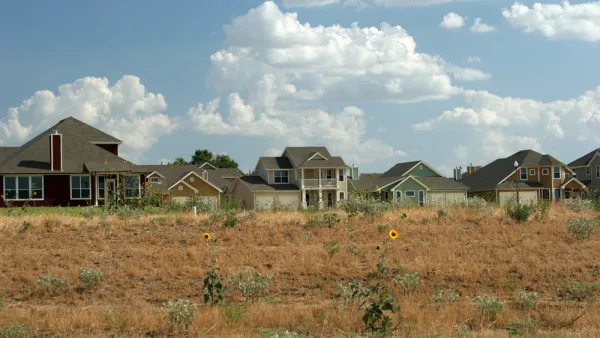A recent series of data on the growth of households in the United States reveals the unprecedented scale of housing demand in recent years.

New household creation data is providing new perspective on the unprecedented housing market demand of the period between 2019 and 2021.
Daniel McCue provides analysis of household growth in the United States in a post for the Joint Center for Housing Studies of Harvard University.
McCue writes:
Three household surveys released over the past few months by the Census Bureau all show nearly unprecedented levels of household growth from 2019 through 2021. The American Community Survey (ACS), Housing Vacancy Survey (CPS/HVS), and American Housing Survey (AHS) each report that annual household growth between 2019 and 2021 averaged between 2.0 million and 2.4 million per year (Figure 1). This level of household growth is well above the 1.4-1.5 million per year pace averaged in 2017-2019, prior to the pandemic, which itself was already higher than previous levels or the 1.2 million households per year average baseline growth rate for 2018-2028 that we projected in 2018.
Some of that household growth was accomplished by the largest generation in the nation’s history (i.e., Millennials) coming of age, according to McCue, peaking a trend that had been building since 2016. But economic factors also contributed, including increased wages and decreased unemployment. “Three rounds of stimulus payments helped adults grow savings for deposits or downpayments, and the pause in student loan payments left borrowers an average of $200 per month to spend on other items,” adds McCue.
A final factor, a sharp growth in the share of the population heading their own household, also contributed to household growth, according to McCue, but also indicates that the trend will be temporary: “Headship rates for most age groups have recovered to rates from a decade ago, and with deteriorating affordability for both renters and homeowners over the past year, further gains in household formation may be limited.” With population growth returning to its previous role as the primary driver of household growth as a result, the smaller generations following the Millennials will place less pressure on the housing market.
A lot more detail on these themes, including useful infographics, are included in the source article below.
FULL STORY: THE SURGE IN HOUSEHOLD GROWTH AND WHAT IT SUGGESTS ABOUT THE FUTURE OF HOUSING DEMAND

Analysis: Cybertruck Fatality Rate Far Exceeds That of Ford Pinto
The Tesla Cybertruck was recalled seven times last year.

National Parks Layoffs Will Cause Communities to Lose Billions
Thousands of essential park workers were laid off this week, just before the busy spring break season.

Retro-silient?: America’s First “Eco-burb,” The Woodlands Turns 50
A master-planned community north of Houston offers lessons on green infrastructure and resilient design, but falls short of its founder’s lofty affordability and walkability goals.

Test News Post 1
This is a summary

Analysis: Cybertruck Fatality Rate Far Exceeds That of Ford Pinto
The Tesla Cybertruck was recalled seven times last year.

Test News Headline 46
Test for the image on the front page.
Urban Design for Planners 1: Software Tools
This six-course series explores essential urban design concepts using open source software and equips planners with the tools they need to participate fully in the urban design process.
Planning for Universal Design
Learn the tools for implementing Universal Design in planning regulations.
EMC Planning Group, Inc.
Planetizen
Planetizen
Mpact (formerly Rail~Volution)
Great Falls Development Authority, Inc.
HUDs Office of Policy Development and Research
NYU Wagner Graduate School of Public Service



























